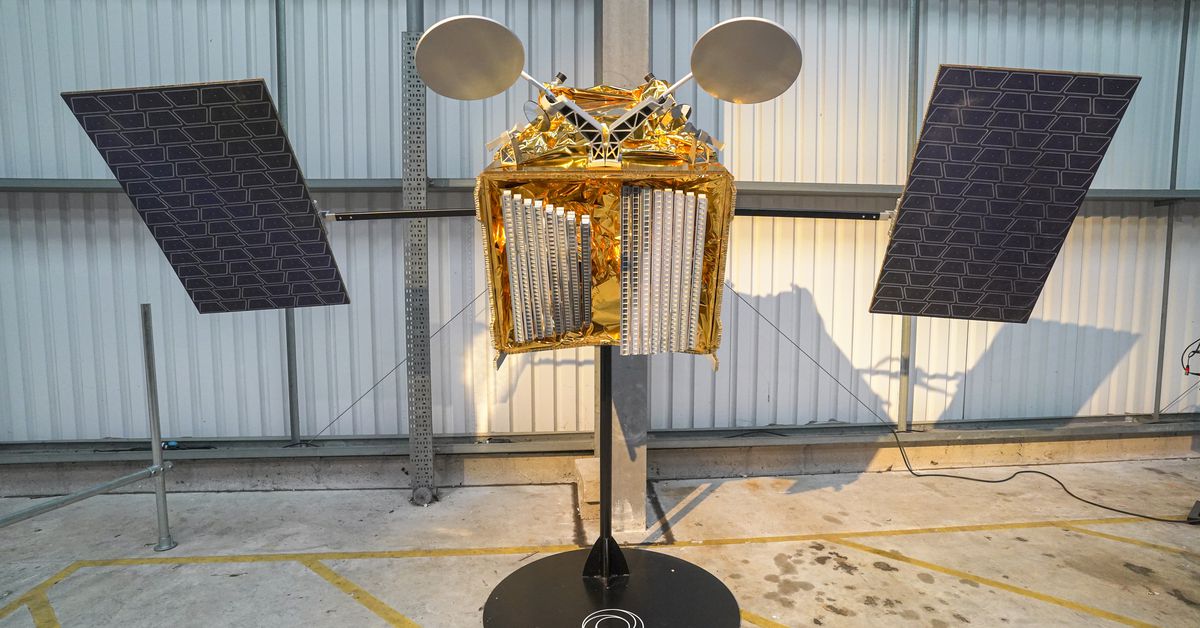Corsair Vengeance i5100 review: falling short of its potential
The Corsair i5100 has all the hallmarks of a top-tier gaming PC, but it doesn't quite match the pace of the competition.

Corsair Vengeance i5100
MSRP $4,400.00
Pros
Fantastically fast Gorgeous design Excellent cable management Powerful cooling prevents overheating Limited bloatwareCons
Power throttling may limit CPU performance B760M motherboard Lacks overclocking support Annoying fan noiseWith the muted furor surrounding Intel’s latest processors, and the continued absence of new top-tier graphics cards, it’s easy to forget just how fast some aging components are. Intel’s 14900KF is still one of the fastest processors ever made, and the RTX 4090 hasn’t been eclipsed in over two years.
So, while the Corsair Vengeance i5100 that I tested doesn’t have any major new hardware revelations, I still expected it to be an absolute monster gaming PC. Combine god-tier performance with classy looks and excellent connectivity, and you have a potent combination that’s well worth considering.
Indeed, its use of a slightly older platform from Intel’s 14th generation of hardware helps keep pricing a little more reasonable, too. You might not be overly concerned about savings if you’re able to throw close to $5,000 down on a gaming PC, but if it shaves off even a couple hundred dollars, it’s got to be worth at least thinking about. With that said, the Corsair Vengeance i5100 has its strengths, but doesn’t quite land among the best gaming desktops you can buy.
Specs and pricing
| Corsair Vengeance i5100 | |
| Case | 2500X RGB Dual Chamber Case |
| Motherboard | MSI B760M Project Zero |
| CPU | Core i9-14900K |
| CPU cooler | Corsair H150i 360mm AIO watercooler |
| GPU | RTX 4080 Super RTX 4090 |
| Fans | 9x iCUE LINK RX120 RGB Fans |
| Memory | 32GB of DDR5-600 64GB of DDR5-600 |
| Storage | 2TB of NVMe SSD storage 4TB of NVMe SSD storage |
| Price | $2900+ |
It feels odd to say that one of the biggest selling points of this PC is that it uses an older processor, and one maligned at launch, too. And yet a year on from its underwhelming debut, the Core i9-14900K (and its KF variant) have found a new niche, as the fastest Intel CPU for gaming and many productivity tasks, despite a whole new generation of CPUs having launched since then. But unfortunately, the Core Ultra 9 285K just can’t compete, especially in gaming.
On paper, at least, that makes the i5100 an arguably more attractive buy than its newer Corsair counterpart, the Vengeance i5200. Both sport up to an RTX 4090, with the option of an RTX 4080 Super if you want to save some money at the cost of absolute flagship performance. Doing so does switch you over to half the memory and storage too, but then the sticker price is just $2,900. This RTX 4090 version with all the trimmings is an eye-watering $4,400.
That high price tag gets you 64GB of DDR5-6000 memory and 4TB of NVMe SSD storage, a 360mm AIO cooler on the CPU, and six more system fans to help keep the interior cool.
 Jon Martindale / Digital Trends
Jon Martindale / Digital TrendsIt’s slightly disappointing to see only a B760 motherboard in this system. At this kind of price, I feel like a premium Z790 motherboard isn’t too much to ask for. The MSI B760M Project Zero is a nice one and looks great with its stealthy design and understated colors, but it’s missing some of the top chipset features, most notably overclocking. If you’re buying a PC with a 14900KF, as opposed to something like the 7800X3D, which isn’t overclockable anyway, you probably want that ability. Especially with the expansive cooling system Corsair has built into this PC.
Along with the Corsair H150i 360mm AIO cooler, you get nine 120mm fans in total. That’s not only a lot of RGB lighting to play around with, it’s a ton of system airflow. Complete overkill, arguably, even if the 4090 and 14900KF are two of the hottest and most demanding components you can fit in a PC like this.
Build quality and design
The overall vibe of the i5100 is excellent. It looks clean and classy, with a slightly stocky shape that helps it stand out — as if the plethora of RGB lighting doesn’t do that enough already. It’s a showcase PC. It grabs the eye and turns heads. It’s the kind of thing your less-techy relatives will comment on as looking like a spaceship.
 Jon Martindale / Digital Trends
Jon Martindale / Digital TrendsThe dual-panel, wraparound tempered glass gives you a full view of the interior of the PC, too, and the boxy shape makes it super easy to reach just about every part of the PC. If you want to tweak and adjust and DIY your new custom build in the future, this system is tailor made for it. The Starforge Systems Navigator is another gaming PC we love that takes a similar approach in terms of design.
Corsair has clearly put a lot of time and effort into cable management to help that clean and open look, too. Everything is tucked away and routed out of sight. It really is a lovely looking machine, and everything feels sturdy. Even the RTX 4090 doesn’t wobble, despite the lack of a GPU brace. Those armored motherboard slots are doing some seriously heavy lifting.
It’s not perfect, though. The dual-chamber design is broad, so even though the overall design is technically mATX, it takes up more space than my mid-tower Fractal North. For a PC that you’re going to want people to be able to see, you’re going to need to budget a lot of desk space for it.
 Compared to this Fractal North, you can see it’s shorter, but also much broader. Jon Martindale / Digital Trends
Compared to this Fractal North, you can see it’s shorter, but also much broader. Jon Martindale / Digital TrendsThe exterior corners are also a little sharp. It’s nit-picking an otherwise lovely design, and maybe I’m just clumsy, but I scratched myself a few times while maneuvering the case around. I get that it gives the front a sharper look, but a little filing down would have gone a long way to eliminating that issue.
Thermals and cooling
Corsair takes the cooling of this PC seriously, and it should, because with an RTX 4090 and a 14900KF, there’s the potential for hundreds and hundreds of watts of heat to be dumped into that expansive case when they’re being pushed hard. To that end, Corsair has the CPU fitted with an H150i 360mm AIO cooler, and the graphics card is the Asus TUF edition using its oversized, triple-fan cooling design. There are also six more 120mm system fans: three intakes on the bottom, two intakes on the right-hand panel, and one exhaust at the rear.
That gives this system a 5:4 ratio of intakes to exhausts, keeping the system at positive pressure and ensuring that any gaps in the chassis will push air and dust out, rather than pulling it in. All intakes are fitted with robust and easy-to-remove and clean dust filters, and all fans are managed by Corsair’s iCUE system, which provides in-depth temperature and fan speed monitoring and a mix of automated and manual controls.
All good in theory.
 Jon Martindale / Digital Trends
Jon Martindale / Digital TrendsHowever, in practice, the implementation feels heavy-handed and lacking in subtlety. Where you would expect such a combination of cooling systems to be nuanced in its approach, the reality is far more blunt, and far more obvious.
At even the slightest hint of load on the 14900KF, the fans spin up dramatically and noisily. This might be for just a few seconds if the system is idling, but throw on a benchmark or a game, and the fan noise is consistent and very audible. You wouldn’t necessarily hear it in headphones, but you might and it’s louder than I personally like my gaming PCs — especially an expensive one.
This is something that you can fix with some adjustments in the iCUE software. Switching most fans to a quiet profile eliminated much of the issue, but the out-of-the-box experience with the i5100’s noise levels leaves a lot to be desired. In our testing of the Alienware Aurora R16, we found the quieter and cooler performance a bit more impressive, though it only goes up to an RTX 4070. Another Corsair system we ended up liking quite a lot, the Corsair One i500, also had some problems with fan noise.
Bloatware
Corsair does install a handful of its own applications like iCUE for managing cooling and RGB lighting and some diagnostics software to help if you run into trouble. That’s about it, though, leaving the system feeling clean and unburdened by unnecessary apps and services. What is there can be readily uninstalled, but it doesn’t feel too egregious or in-your-face.
I would have liked to see a few more basic applications pre-installed in such a high-end gaming system, though. Just for easier setup. Steam, Chrome, Discord perhaps. Not something you can’t do yourself easily, but if you’re going to spend the time installing apps you think people might need, you might as well install the ones you know they will.
Performance
As much as Intel might not have made waves in 2024 with its big CPU launch, let’s not pretend that its top chips aren’t seriously powerful and more than capable of giving AMD’s best a run for their money. Even as maligned as the 14900K was at launch, it’s still one of the most powerful processors ever made, and paired with a 4090, there should be nothing it can’t handle.
And indeed, that configuration in this Corsair i5100 is supremely powerful, but perhaps not quite as powerful as it should be.
In Cinebench 24, while the 14900KF does well, its scores were about 10% lower than I expected, with a boost clock that never broke 5.7GHz in the single-threaded test, or 4.9GHz in the multi-threaded test. I dug into the why on this one for a while, and discovered some power limit throttling and current/EDP limit throttling warnings in Intel XTU. Corsair suggested we update the BIOS to the latest version, which I promptly did, but it made little difference.
| Corsair i5100 (Score) | |
| Cinebench R24 Single/Multi/GPU | 130/2017/32134 |
| Geekbench Single/Multi | 3081/21431 |
| Handbrake | 35s |
Fortunately, Geekbench didn’t seem to show the same problems, and the Handbrake transcoding was impressively quick, so this may have been a Cinebench quirk with this system. I still don’t like seeing any throttling on a PC this expensive, and my bet is on the B760 motherboard not having the beans this CPU needs to really stretch its legs, but if it doesn’t pan out in the real world, how much does that really matter?
| Corsair i5100 (Score) | |
| 3Dmark Fire Strike | 47473 |
| 3Dmark Time Spy | 32444 |
| 3Dmark Steel Nomad | 8922 |
| 3Dmark Steel Nomad Light | 41622 |
One plus, though, is that I never saw any thermal throttling. Whether in gaming, or synthetic performance testing, this notoriously hot and heavy chip never broke 83 degrees C. Fan noise was seriously noticeable, though and something I would likely play with extensively to bring it down if this was my daily driver gaming PC.
| Corsair i5100 (Average FPS) | |
| Cyberpunk 2077 4K Ultra RT w/DLSS3 | 76 |
| Cyberpunk 2077 4K Ultra RT | 44 |
| Cyberpunk 2077 4K Ultra | 74 |
| Red Dead Redemption 2 4K Ultra | 128 |
| Black Myth: Wukong 4K Ultra | 99 |
Suffice to say, weird throttling behaviors or not, this PC is incredibly powerful and can play just about anything well — though as per usual, Cyberpunk with everything maxed out still gives it some trouble. DLSS 3 to the rescue.
Should you buy the Corsair i5100?
 Jon Martindale / Digital Trends
Jon Martindale / Digital TrendsProbably not — at least not in this configuration I tested. It is powerful, and it looks great. There’s potential there for a quiet system once you’ve tweaked and adjusted the cooling and the fan curves. But at that price? It’s hard to justify compared to the competition.
The 14900KF might be faster than the newer 285K, but it’s not as consistent as I’d like to see on this comparatively-pedestrian-feeling B760M motherboard. The fact that this PC doesn’t support overclocking for such an expensive build feels like a misstep and one that I’d be miffed about if I had put down over $4,000 on it. Especially not when Corsair also offers a comparably priced version of this same system with Ryzen X3D CPUs. For gaming, they’re just way better, and way cooler than this aging monster.
If you do buy the i5100, I’d suggest opting for the RTX 4080 Super version. It has less storage and memory, but 2TB and 32GB are still plenty, and you shave around $1,500 off the price for maybe 20% performance drop in real-world gaming. That still gives you a stupendously fast system in a big and airy case with some great aesthetics, and you can always upgrade it later if you find it lacking in the long term.
Realistically, though, the best gaming desktops out there offer better value, with a better out-of-the-box experience, better pricing, and a better upgrade path. Just, better. At this kind of money, that’s not really good enough.

 Fransebas
Fransebas 
































